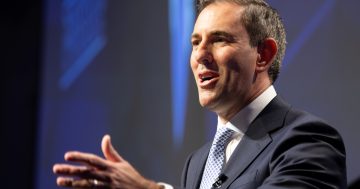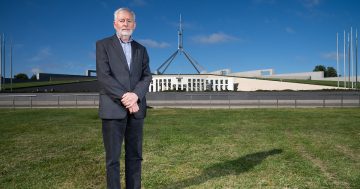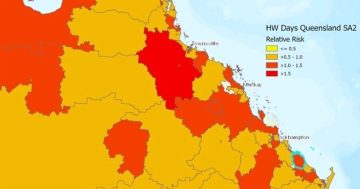Stephanie Chalmers* says under 35s cutting back while older Australians are increasing spending as cost-of-living pressure rises.
 There is a “sharp divide” in how Australians are spending their money as cost-of-living pressures hit households unevenly, a report based on the financial data of 7 million Australians shows.
There is a “sharp divide” in how Australians are spending their money as cost-of-living pressures hit households unevenly, a report based on the financial data of 7 million Australians shows.
The report from CommBank iQ, a joint venture between Commonwealth Bank and data firm Quantium, shows cost-of-living pressure has been steadily increasing since late 2022, and renters and people under 35 years old are feeling the greatest pain.
“The cost-of-living pressure score has started to rapidly pick up since Christmas, and certainly the trends are that financial pressure will continue to rise,” report author Wade Tubman said.
CommBank iQ has developed its “cost-of-living pressure score” based on how people change their total spending and discretionary spending.
Essentially, if you are carrying on spending like nothing has changed, you cannot be feeling that hard hit.
Renters, Australians aged 30 to 34 feeling the pain
When divided by age group, Australians aged 30 to 34 have the highest cost-of-living pressure score, followed by the rest of the 25 to 44-year-old age bracket.
Those over 75 years old and between 45 and 49 are under moderate pressure, in line with the national average.
Some households, however, are not feeling the pinch at all.
Those between 60 and 74 years old had “negative” pressure scores, indicating that rather than cutting back, they are changing their behaviour in the opposite direction.
Renters are feeling much more pressure than home owners.
However, it is worth noting the home owner category includes households with no mortgage or only a small home loan balance, so it is likely masking the pain being felt by households with large repayments.
Based on the analysis of the aggregated and de-identified payments data of CBA customers, under 35s are generally cutting back their expenditure, while older Australians are buying more.
The spending data in the report is based on the actual money leaving people’s accounts, so most are naturally spending more than a year ago, due to the steep price rises we have seen.
But there is a clear split between those whose spending growth is lagging behind inflation — that is, they might be spending more, but they are actually buying less — and those whose spending growth is outpacing inflation.
With the exception of 18 to 24-year-olds, many of whom may live at home and have lower housing costs, younger Australians are reducing their spending much more than older Australians, particularly those over 55.
It is particularly stark in some categories.
For example, under 35s have reduced spending on clothing and shoes by more than 8 per cent, before accounting for inflation, whereas over 35s have increased spending on clothing by more than 3 per cent.
When it comes to dining out and takeaway, under 35s are spending 7.1 per cent more, so considering how much prices have risen, they are probably purchasing roughly the same number of meals out, whereas over 35s are spending 18 per cent more than a year ago.
Single- and double-income households without children have reduced their spending faster than families, which Mr Tubman puts down to their ability to change their habits more quickly.
“Young singles and couples can turn things on and off faster because they don’t have as many commitments,” he said.
Travel still on the essentials list in ‘counterintuitive’ COVID rebound
Despite all the cost-of-living concerns, there are some unexpected details behind the overall spending trends.
While the CommBank iQ data shows overall spending per person on essentials is barely keeping pace with inflation, discretionary spending has increased sharply over the course of 2022.
In particular, travel spending has surged, rising 39 per cent compared to the first quarter of last year.
“It seems counterintuitive that at a time of increased cost-of-living pressures, consumers are choosing to boost their discretionary spending,” Mr Tubman said.
“What we’re seeing is a continued COVID-rebound effect, with consumers catching up on the experiences that they missed out on during the pandemic.”
Discretionary spending accounted for about 49 per cent of people’s wallets in the first quarter, and the biggest increases were in experiences such as eating out, travel and entertainment, while people cut back on clothing and household goods.
The report also tracks which areas of Australia’s two biggest cities are under the most financial pressure.
In Sydney, it is the outer south-west, alongside the inner-city and eastern suburbs, which have a high number of younger residents and renters.
In Melbourne, it is concentrated in inner Melbourne and outer areas such as Werribee, Melton and Cranborne.
*Stephanie Chalmers is a business reporter based in Sydney.
This article first appeared at abc.net.au











